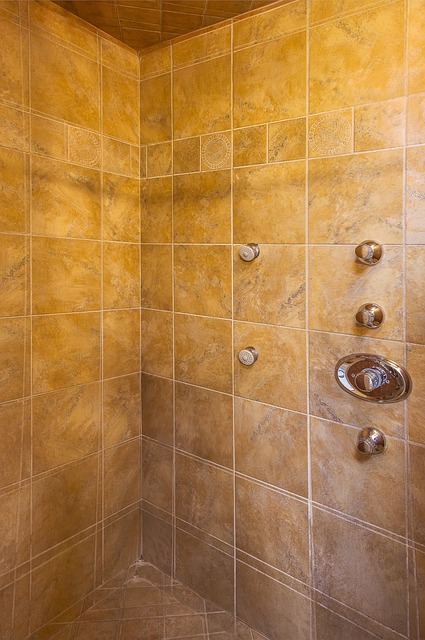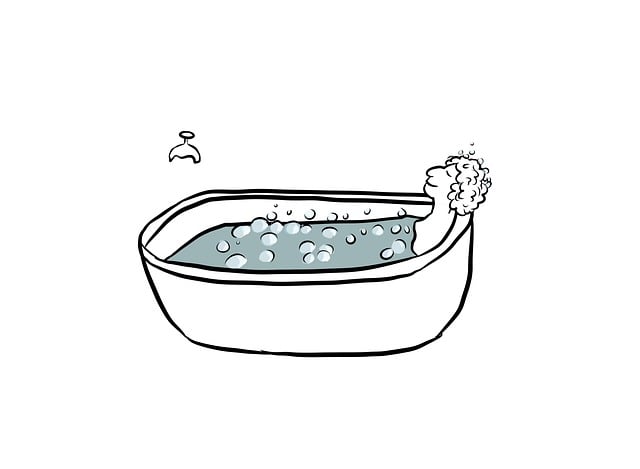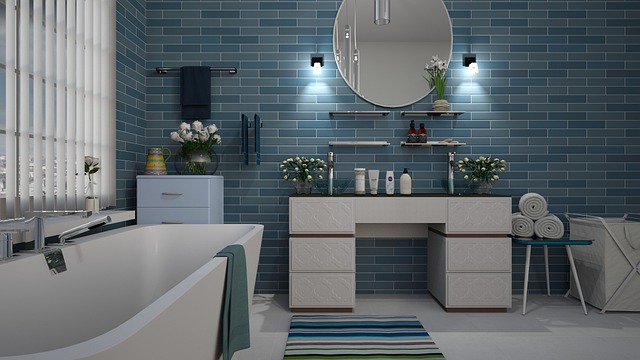Shower mold is a common bathroom issue caused by high humidity and moisture. It can be prevented and removed by improving ventilation, regular cleaning with anti-mold products, using mold-resistant paint, and addressing grout lines thoroughly. Effective bathroom mold removal requires understanding these causes and implementing preventive measures like exhaust fans and quick-drying paint. For severe cases, professional intervention is recommended to avoid health risks and ensure a clean, safe environment.
Tired of battling bathroom mold? Discover effective solutions to prevent and eliminate shower mold problems once and for all. From understanding the root causes of these stubborn growths to implementing best practices for bathroom ventilation and choosing mold-resistant paint, this guide covers everything you need to know. Learn powerful cleaning methods for removing mold from grout and explore additional tips to create a mold-unfriendly environment. When severe issues arise, we’ll also help you decide when to call in the professionals for expert assistance.
- Understanding Shower Mold Problems and Their Causes
- Best Practices for Bathroom Ventilation to Prevent Mold Growth
- Choosing Mold-Resistant Paint for Your Bathroom Ceiling
- Effective Cleaning Methods for Removing Mold from Grout
- Additional Tips to Create a Mold-Unfriendly Bathroom Environment
- When to Call in the Professionals for Severe Mold Issues
Understanding Shower Mold Problems and Their Causes

Shower mold problems are a common issue in bathrooms due to the high humidity and moisture levels present in these spaces. This type of mold, often visible as discolored patches or stains on ceilings and walls, thrives in dark, damp environments. The causes of shower mold range from poor ventilation to inadequate cleaning routines. Unaddressed, it can lead to not only unsightly ceilinl damage but also potential health risks, as some molds produce harmful spores.
Effective bathroom mold removal requires understanding these causes and implementing preventive measures. Ensuring proper ventilation, like installing exhaust fans or opening windows during showers, is crucial. Regular cleaning with mold-killing products, especially in grout lines where moisture can linger, is essential. Additionally, considering mold-resistant bathroom paint and choosing materials that dry quickly can create a less hospitable environment for mold growth.
Best Practices for Bathroom Ventilation to Prevent Mold Growth

Maintaining a dry and well-ventilated bathroom is essential to prevent shower mold problems and bathroom mold removal. The best practices for effective bathroom ventilation include ensuring proper air circulation, especially in areas where moisture accumulates, such as near showers and baths. Consider installing an exhaust fan that can quickly remove humid air from the room, reducing the chances of water condensation on ceilings and walls. This simple step is a powerful tool in how to prevent bathroom mold growth.
Additionally, using mold-resistant products like specialized bathroom paint and tiles can significantly reduce moisture retention. When cleaning shower grout or other areas prone to mold, ensure you use anti-mold cleaning agents and regularly maintain the area to avoid recurrence. Proper ventilation, along with these strategies, will create an environment that discourages mold growth, keeping your bathroom clean and healthy.
Choosing Mold-Resistant Paint for Your Bathroom Ceiling

Choosing the right paint can significantly reduce your shower mold problems. Opt for a mold-resistant paint specifically designed for bathrooms. These paints are formulated to create a barrier against moisture and prevent the growth of mold and mildew. When selecting a product, look for labels that mention “mold-resistant,” “moisture-resistant,” or “fungi-inhibiting” to ensure effectiveness in your humid bathroom environment.
Additionally, proper ventilation is key to maintaining a mold-free ceiling. Ensure your bathroom has adequate ventilation, especially around the shower area. Consider installing an exhaust fan that removes moist air from the room, preventing it from settling on your ceiling and walls. Regular cleaning also plays a vital role; wipe down the ceiling with a mold-fighting cleaner and regularly inspect for any signs of mold growth to address shower mold removal promptly.
Effective Cleaning Methods for Removing Mold from Grout

Effective Cleaning Methods for Removing Mold from Grout
When addressing shower mold problems or bathroom mold removal, one often overlooked area is the grout between tiles. Grout can become a breeding ground for mold due to its porous nature and high humidity in bathrooms. To effectively combat this, regular cleaning with a mixture of water and bleach is recommended. Prepare a solution of one part bleach to ten parts water, then apply it to the affected areas using a sponge or brush. Let the solution sit for several minutes to allow the bleach to penetrate the grout, before scrubbing thoroughly to remove any visible mold. Rinse the area well with warm water to ensure all residual bleach is eliminated.
For more persistent shower mold problems, consider using a specialized mold and mildew cleaner designed for grout. These products often contain powerful yet safe chemicals that can cut through tough stains and prevent future growth. Additionally, ensuring proper bathroom ventilation and using mold-resistant bathroom paint can significantly reduce the occurrence of both mold and mildew in your bathroom, offering long-lasting solutions to keep your space not only clean but also healthy.
Additional Tips to Create a Mold-Unfriendly Bathroom Environment

To create a mold-unfriendly bathroom environment, consider several additional tips beyond regular cleaning and maintenance. First, invest in efficient bathroom ventilation systems that remove moisture from the air. This is especially crucial in spaces with high humidity, such as showers. Modern ventilation fans designed for bathrooms can quickly extract damp air and replace it with dry outdoor air, thus preventing mold growth.
Additionally, when renovating or decorating your bathroom, opt for mold-resistant materials and paint. Many paints now come with built-in antifungal properties that inhibit mold growth. When addressing existing shower mold problems, don’t forget to tackle the grout as well. Grout can be a breeding ground for mold due to its porous nature and water retention. Regular cleaning with a mold-removing solution or bleach can help, but for severe cases, you might need to replace the grout to ensure a mold-free bathroom environment.
When to Call in the Professionals for Severe Mold Issues

If your bathroom ceiling is showing signs of severe mold growth, it may be time to call in the professionals. Extensive mold issues often require specialized equipment and expertise for safe and effective removal. Professional mold remediators have access to advanced tools like HEPA vacuums, air scrubbers, and protective gear to ensure a thorough clean-up without risking further contamination or health risks. They can also identify and address the root causes of mold growth, such as water leaks, poor ventilation, or structural issues, preventing future problems.
When dealing with shower mold problems or hard-to-reach areas like grout, it’s best to leave these tasks to experts. They use specialized cleaning solutions and techniques, including mold resistant bathroom paint, to create a barrier against future growth. Regular cleaning and maintenance can help keep your bathroom environment healthy and hygienic, but severe or recurring mold issues may require professional intervention to ensure a safe and long-lasting solution.
